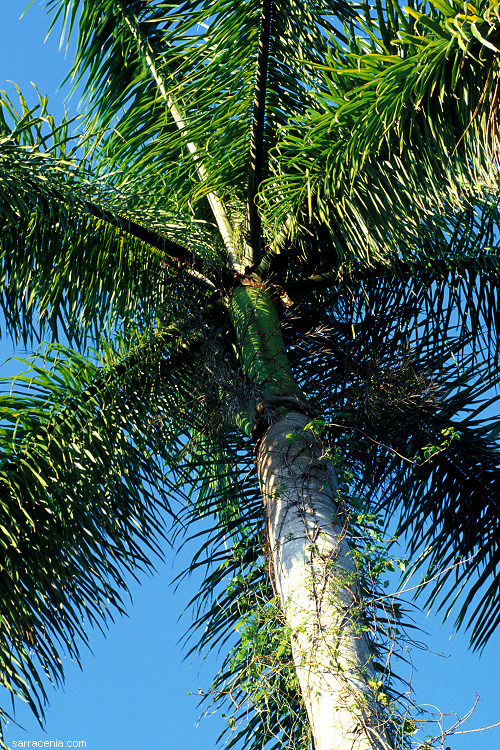
Another try:
I returned to
Fakahatchee strand at dawn the next day.
After the depressing debacle at the
Utricularia simulans site, I was hoping a conclusive
identification for the putative
"Utricularia radiata" would help brighten the otherwise
pathetic carnivorous-plant-content of my Florida trip.
Instead of the returning to the boardwalk, where nothing new could
be learned, I drove to the northern portion of the strand
where you were allowed to get off the path and actually slog around in
the water.
I parked my car at a spot that looked promising, and that had an old
"tram" going into the swamp. If I am using that word
correctly, it means an old road--slightly elevated--that looks a little
like a berm road or right-of-way, that enters the swamp. It functioned as
a convenient transect for me. I gathered gear together, took GPS and
compass readings,
skirted around a few lazing snakes, and started into the swamp.
OK, I will definitely admit to a certain wussy-factor here. I dearly
wanted to cut straight into the swamp and get up to my neck in the water
and fun. However, I was alone and without a cell phone, so such
shenanigans were not very wise. I stayed mostly dry.
Again, I must say that the Fakahatchee is simply one of the most
spectacular places I have ever been to.
This photograph looks up into the leaves of a native, Florida
royal palm (Roystonea elata), a lovely species that can
exceed 80 meters (90 yards) in height.
Two hours into my hike and there were no signs of Utricularia of
any kind. Plenty of red imported fire ants, though.